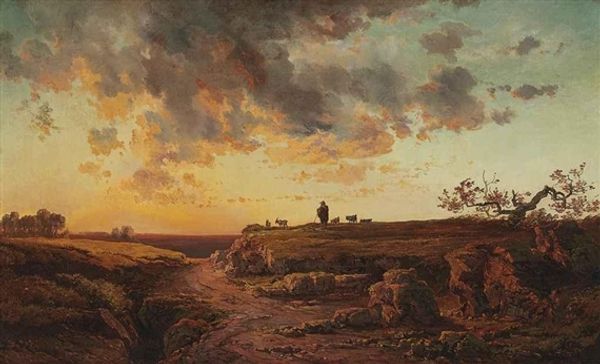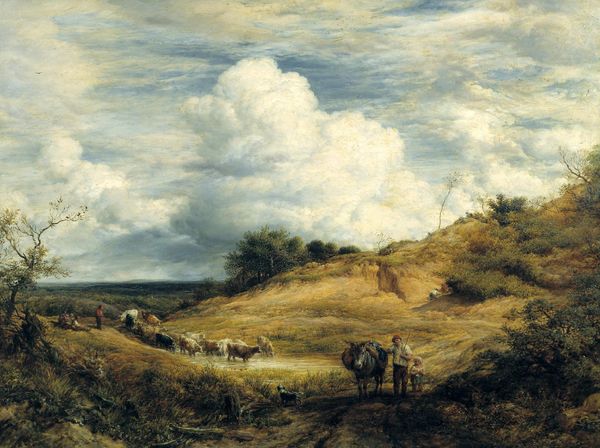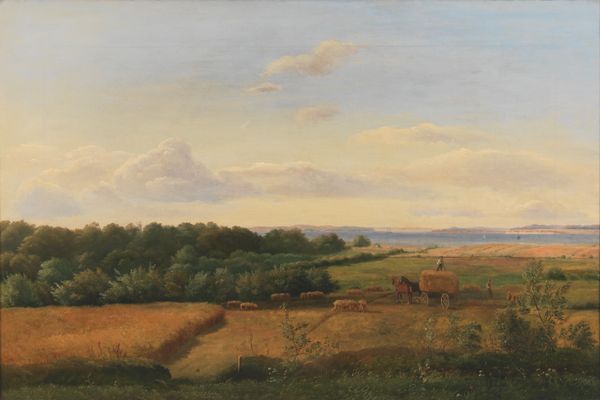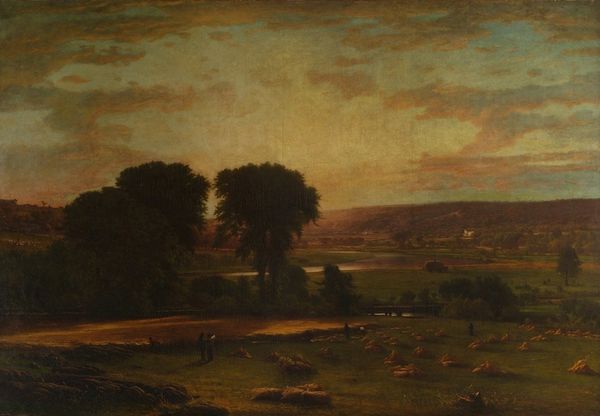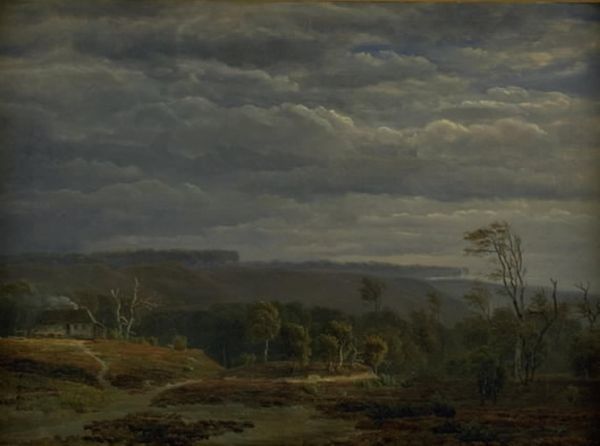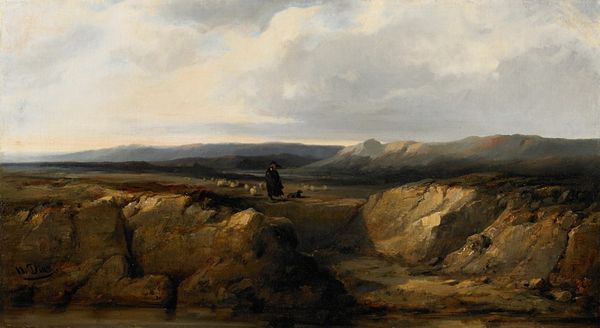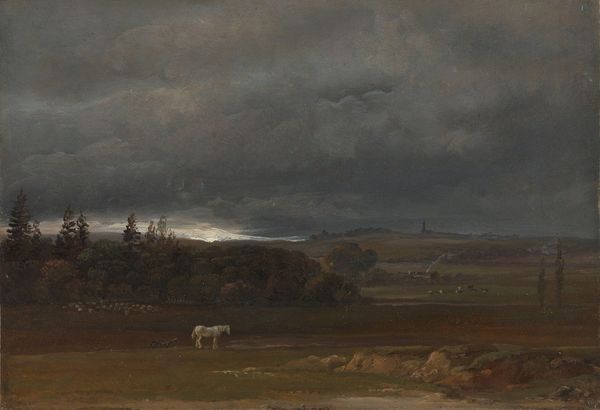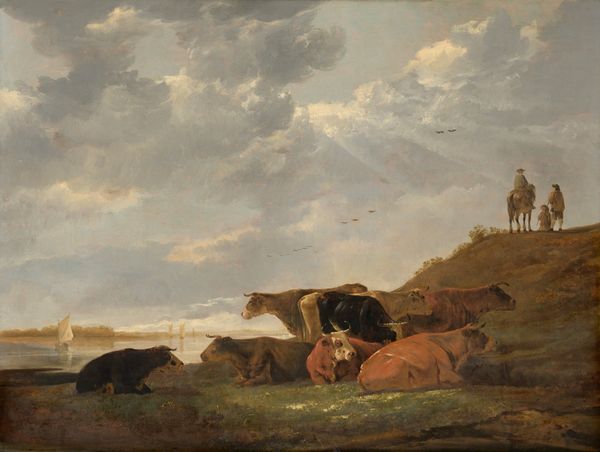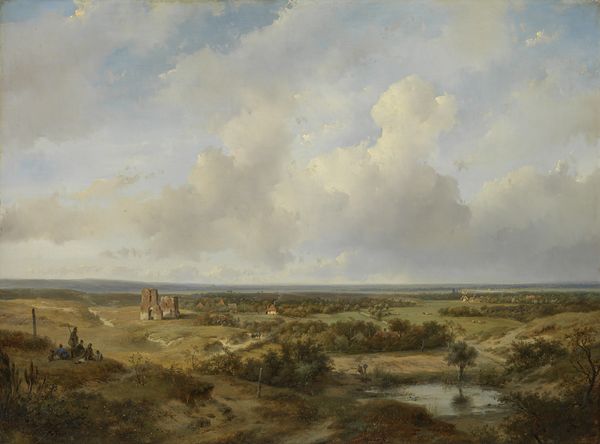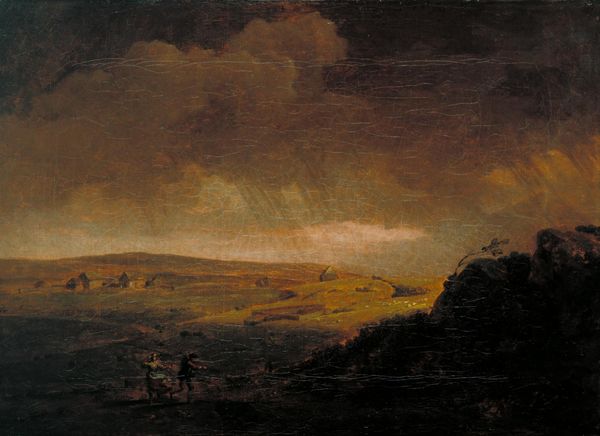
painting, oil-paint, canvas
#
painting
#
oil-paint
#
landscape
#
canvas
#
romanticism
#
genre-painting
#
academic-art
#
realism
Dimensions: 96 cm (height) x 144.5 cm (width) (Netto)
Curator: Let's consider Godtfred Rump's 1848 painting, "Landscape near Frederiksborg Castle," a work rendered in oil on canvas. What are your initial thoughts? Editor: It’s…ominous. The brewing storm and deep shadows cast a serious pall over what otherwise might have been a pleasant scene of rural life. There's a sense of something gathering. Curator: Absolutely. That gathering storm can symbolize internal and societal upheaval. The Romantic period, after all, wasn’t just about pretty landscapes; it often reflected humanity’s relationship with a powerful, unpredictable nature, acting as a mirror to the anxieties of the time. Editor: True. And it makes me wonder about the pigments Rump used. Look at the dense cloud cover and then the almost luminescent patch of sky. Sourcing those colours and achieving that contrast involved a real labour process, thinking about where the materials come from and what was required to produce that atmospheric scene. Curator: Interesting point. The bright sky also recalls notions of divine presence, illuminating and perhaps judging the world below. Observe how small the figures and dwellings appear, almost dwarfed by the expansive landscape and the grand spectacle of the sky. The symbolic weighting is deliberate. Editor: I'm also noticing the various depictions of labor represented in the landscape – harvesting crops, tending to livestock, travelling the paths. And the texture! I bet the canvas has a lovely roughness. Curator: It does indeed. The application of the paint contributes to a sense of realism, albeit one infused with Romantic sensibility. There's a longing, a feeling that’s not entirely peaceful despite the seemingly pastoral subject matter. Editor: So, for me, the painting highlights the artist’s handling of materials in depicting this scene, focusing attention on production and social context to evoke the tension within nature and rural life. Curator: And I see that the same visual and psychological tensions speak to larger historical and cultural patterns. We can follow that path further into art history itself. Editor: Both material choices and their symbolic usage create multiple, sometimes contrasting meanings, I'd say. Curator: Precisely, that complexity makes this work so captivating even today.
Comments
No comments
Be the first to comment and join the conversation on the ultimate creative platform.


